Smyths - "That Perfect Toy Feeling"
A lot of my work feels like realising the career ambitions of when I was 7, but this project was quite spectacularly true to this: being paid to play with all of the toys in the toy shop. A job playing with unlimited plastic dinosaurs - what could possibly be more awesome? Maybe the addition of some pyrotechnic confetti.
The toy shop in question was Smyths, who wanted to create a spectacular musical experience with hundreds of singing and dancing toys. The brief stated that they couldn't have any movement beyond their original functionality, and so it was a case of basic puppeteering, more complex puppeteering, and electro-mechanical hacking controlled via MIDI.
The project was a collaboration with Is This Good?, with whom I have been on many adventures this year.
A huge amount of boxes were sent to my workshop, and each toy dismantled to see how it worked. Oscilloscope probes revealed the operating polarity and voltages of motors, recorded carefully in a spreadsheet.
It was really educational checking out all the developments in modern toys - some really new ideas, some clever use of mechanisms that have been around for a long time.
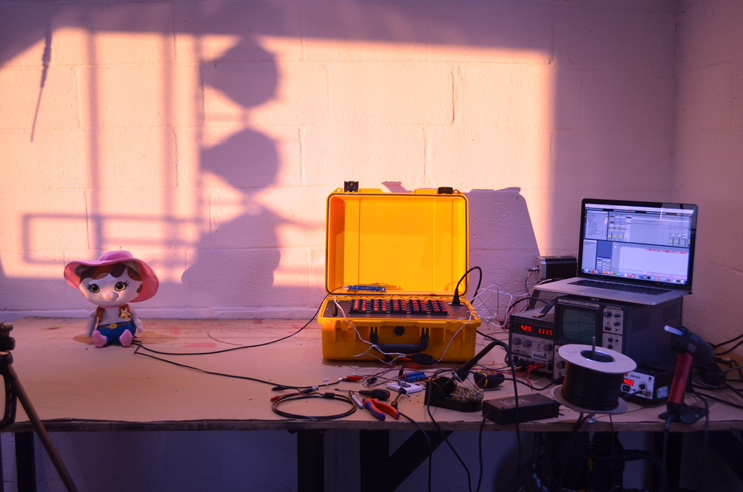
Each toy was given a labelled trailing lead with function and max voltage on the rear. I love these super cool cable tie labels.
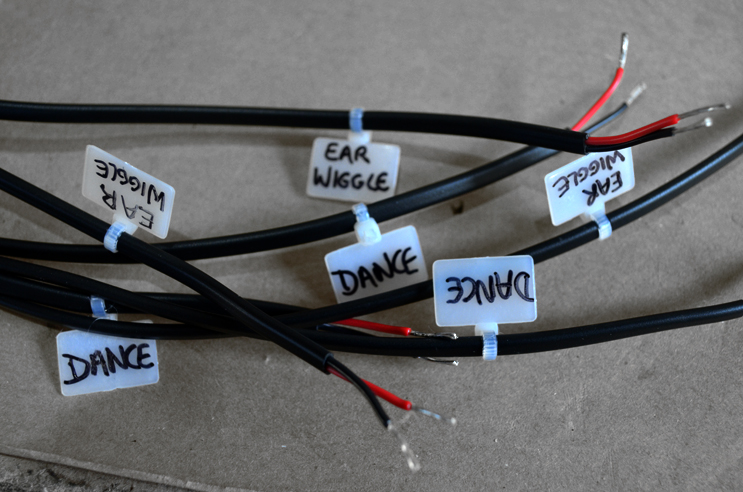
These birds were modified to open their beaks in time to the lyrics of the music.
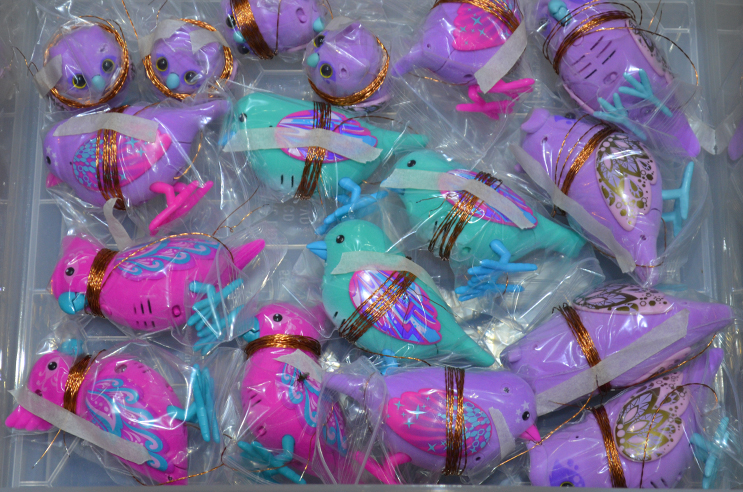
Care Bear bottom control. They could dance and move their ears in time to music.
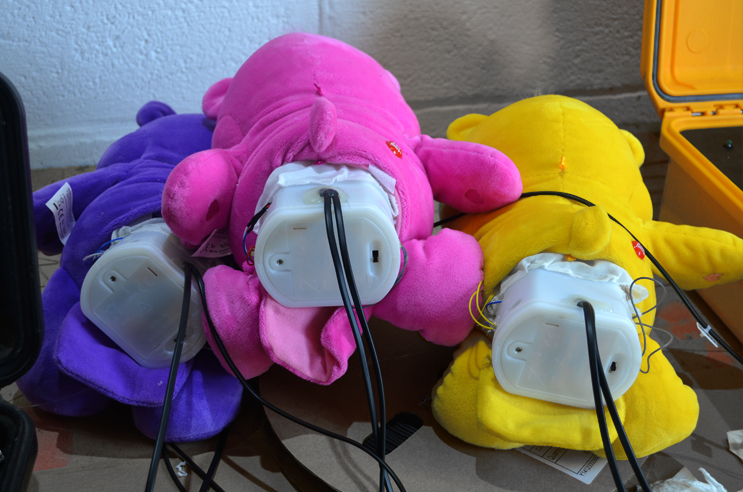
This mermaid could wave her tail by reversing the polarity of an electromagnet that could pivot between two permanent magnets.

The electromagnet had tiny little wires, to which I soldered 27SWG wires using my clumsy sausage-like fingers.
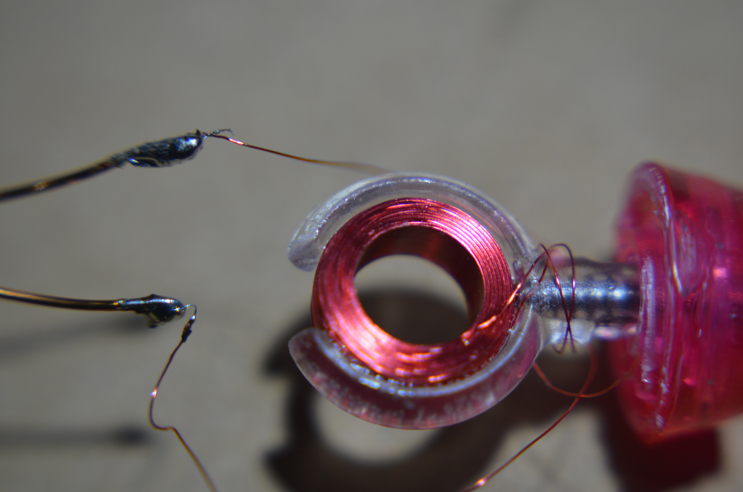
Mermaids ready to dance
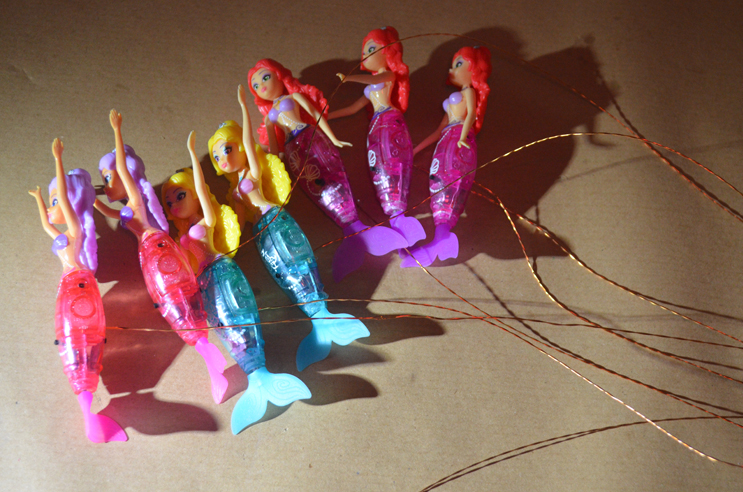
Here is one of the modified turtles, which worked on the same principle - each flipper has an electromagnetic ring that can move between the two permanent magnets.
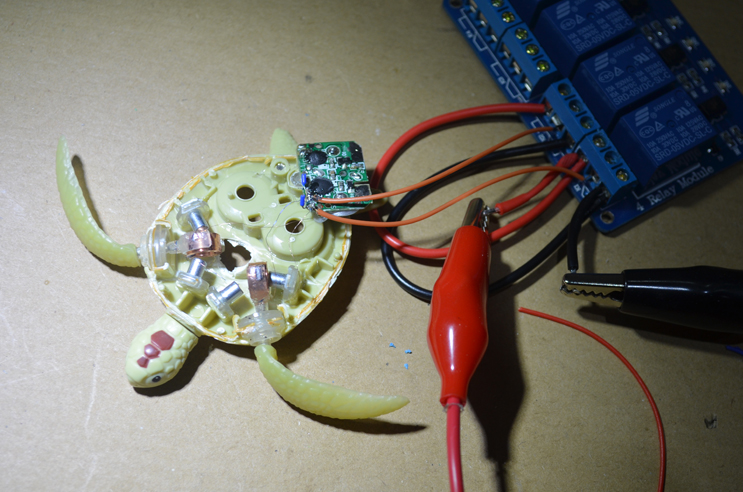
Wait! No! Cancel that! Turtles to be replaced with jellyfish at the last minute!
And can they be made to rotate?! And flash in time to the music?! Of course!
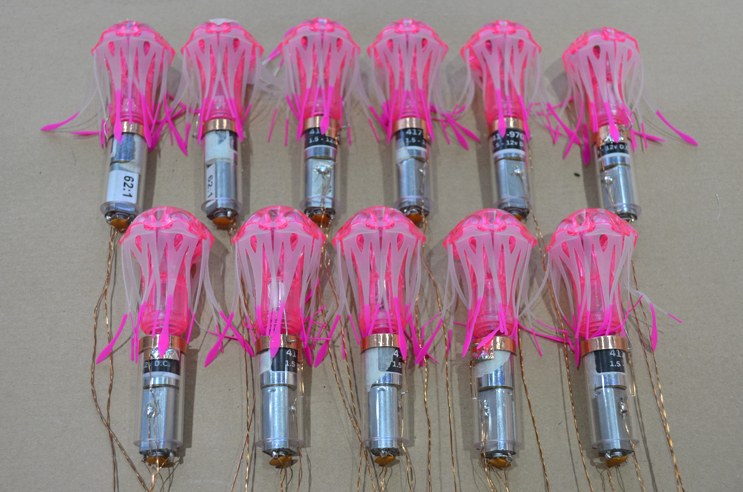
For the LEDs to flash, the +ve supply was fed to the rotating jellyfish via a piece of wire that ran on a conductive strip around the top of the tube that held the DC motor and gearbox. The -ve was fed through the motor shaft.
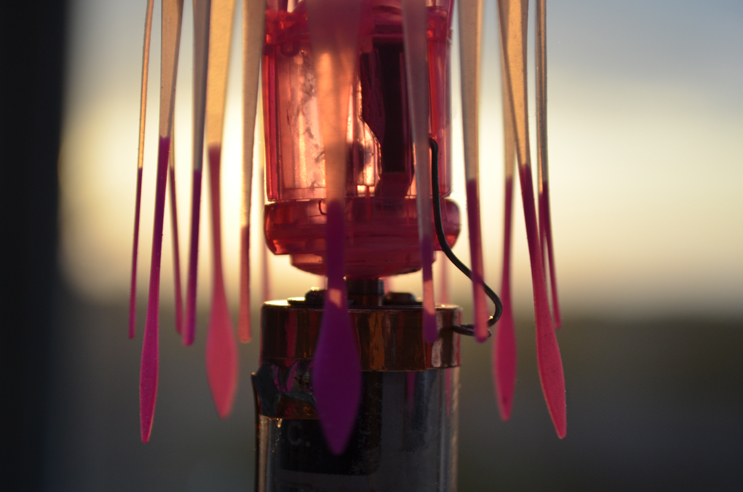
The "flying heroes" were the most difficult toy to modify. The original toy involved pulling a retractable string that stripped the teeth off the plastic gears caused a character to spin and take off, and motorising it proved an interesting challenge. 24V DC motors were used in the end, purchased from a laboratory that had been using them to make centrifuges.
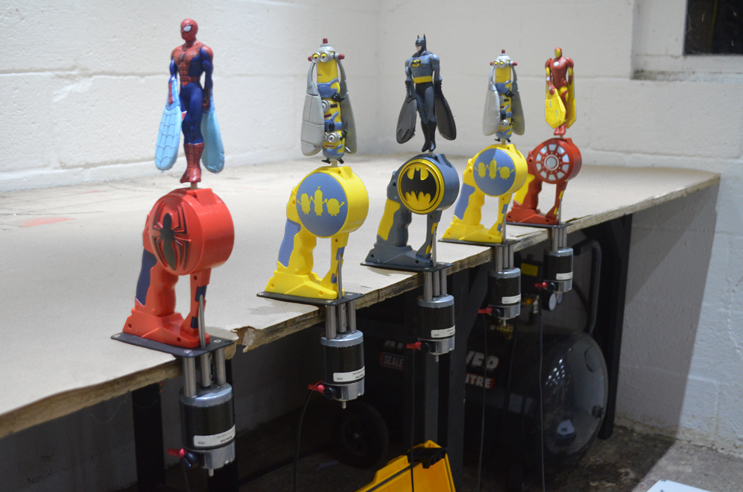
Each motor was programmed to spin briefly anticlockwise, and then reverse direction so that the flying hero ramped up the interfacing detail on the mating spigot.

The preparation time of different toys varied hugely - the flying heroes took 8 full days of machining and construction, the tarantulas took about 20 minutes in total.
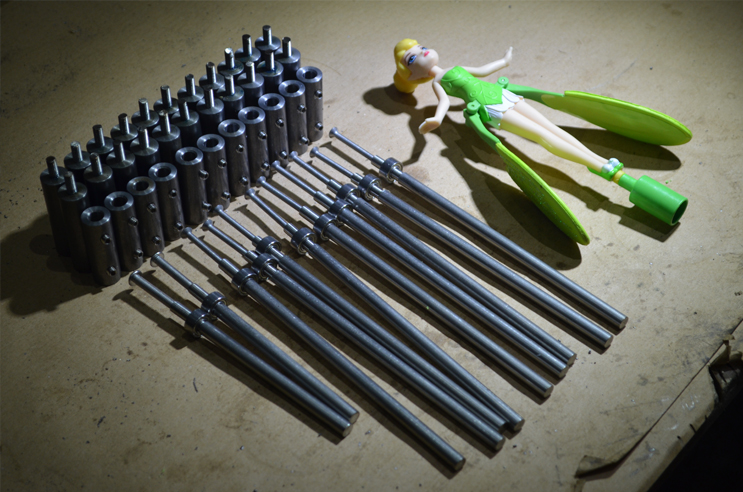
The mice were hardwired to run continuously in a circle.
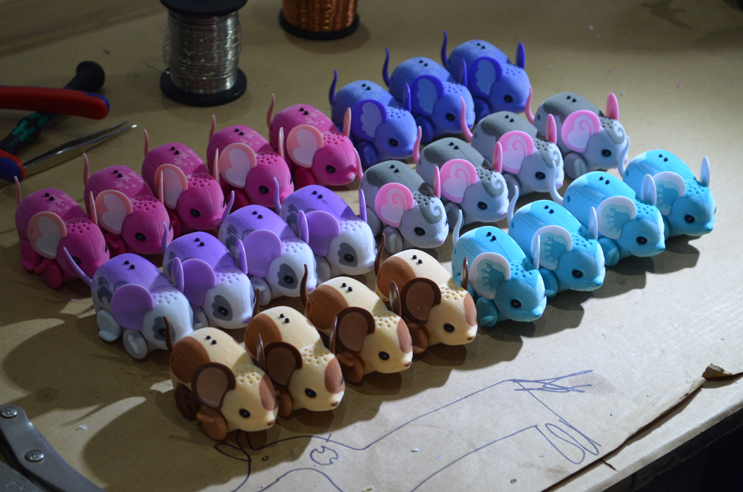
They had an amazing tiny little motor.

The Clever Keets were interesting - after identifying the motors that activated the wings and beak movements, it eventually became apparent that the rocking legs and head rotate movements were operated by the same motors, but in reverse...
Wait! No! Cancel that! Clever Keets to be replaced with purple owls!
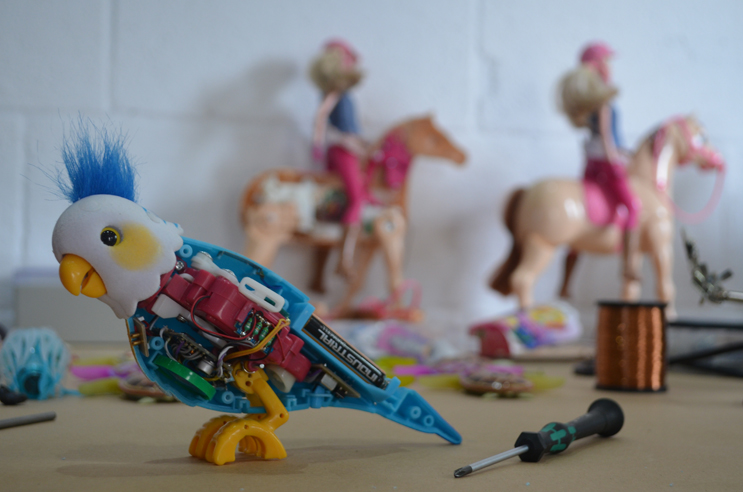
This toy involved a clever mechanism that allowed Barbie to leap onto her horse, and then for the horse to happily trot away. All via one motor, with eery realism.
After considering various hi-tech triggering options, the classic "fishing line out of the horses bottom" solution was used, appropriate for so many situations.
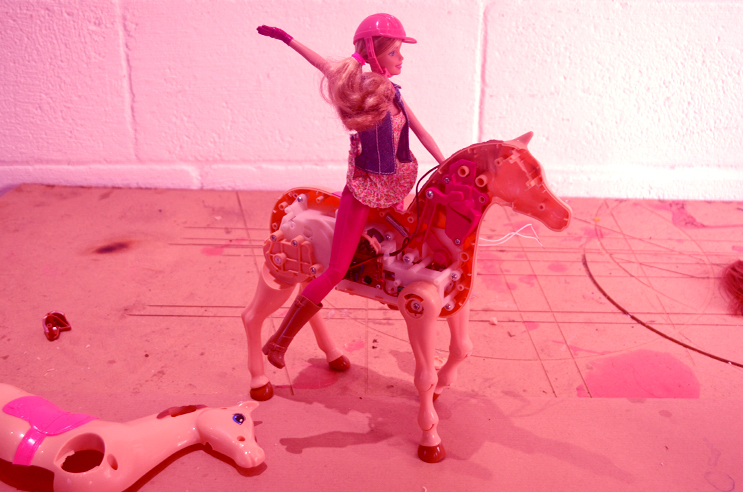
Here's Bing Bunny (not to be confused with the guitarist from the Roots Radics), with his interesting cam system.
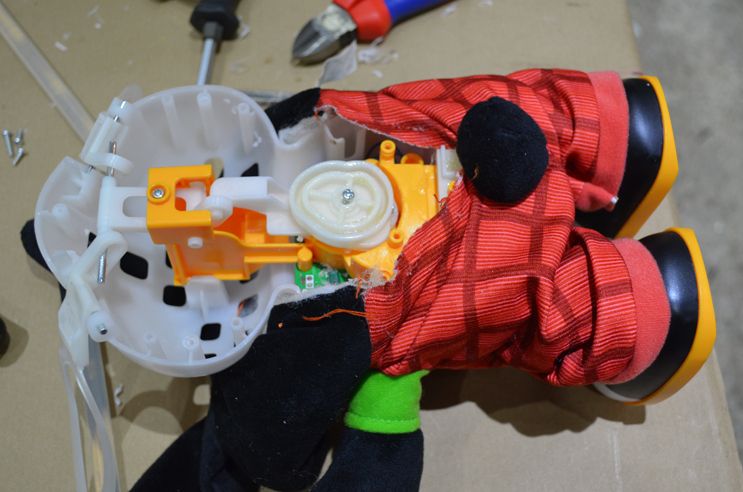
As the toys all ran on various voltages, a number of relay boards were used for maximum flexibility. They were triggered by the legendary "yellow boxes", originally made for popping balloons (and also used on some unreleased jobs still currently top secret).
A number of benchtop power supplies were connected to the relays, so that they could provide 4.5V or 2.2V or whatever, and reverse the polarity as the Care Bears required.
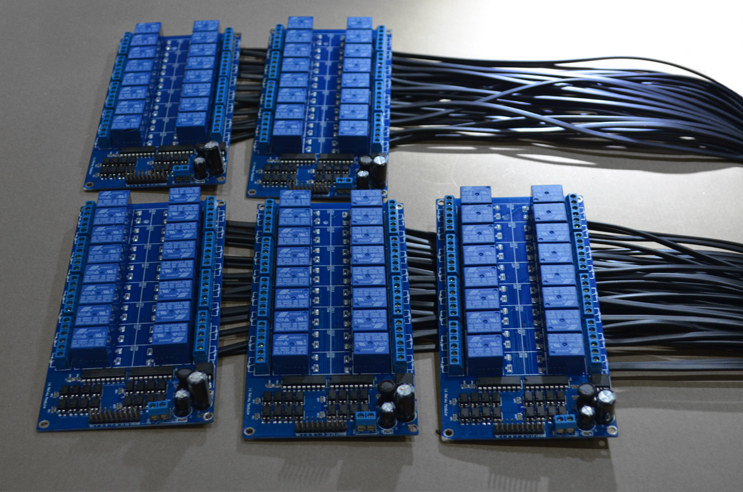
A specialist piece of equipment that ended up having a surprising amount of uses...
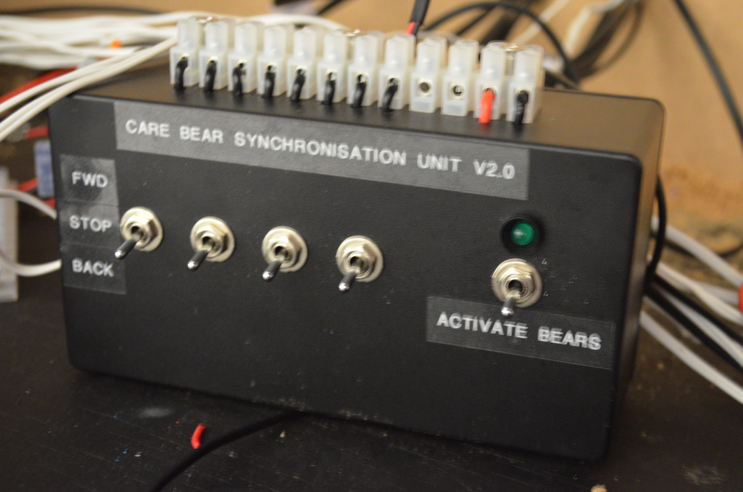
Kit ready for the trip to Black Island Studios...
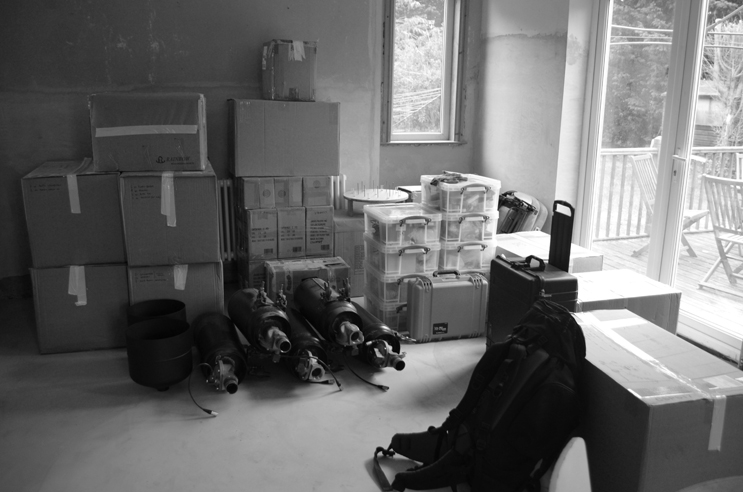
Many toys at ITG? HQ, Hackney.
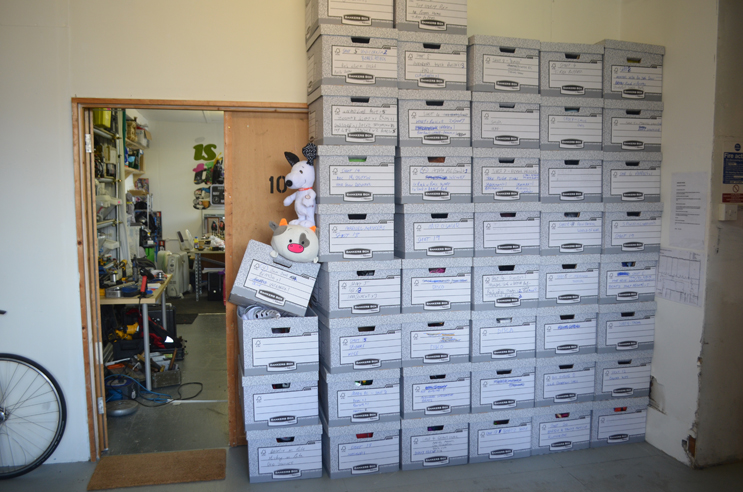
At the studio...

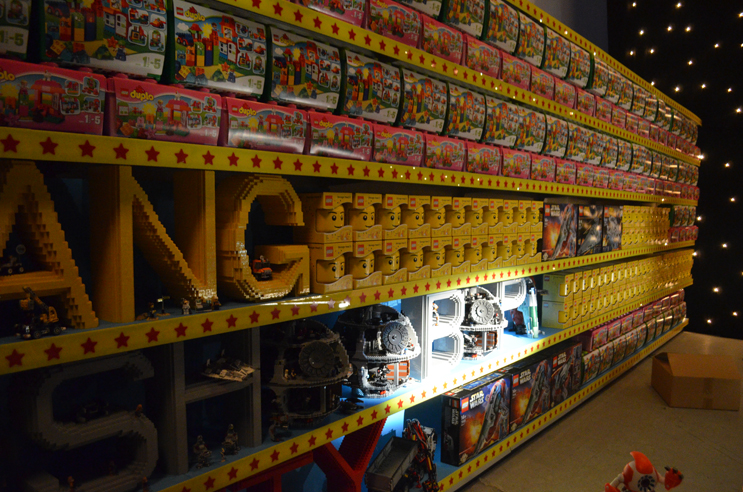
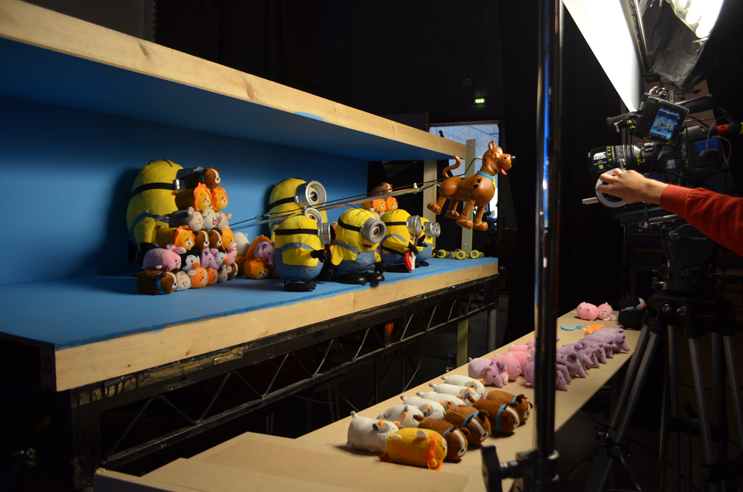
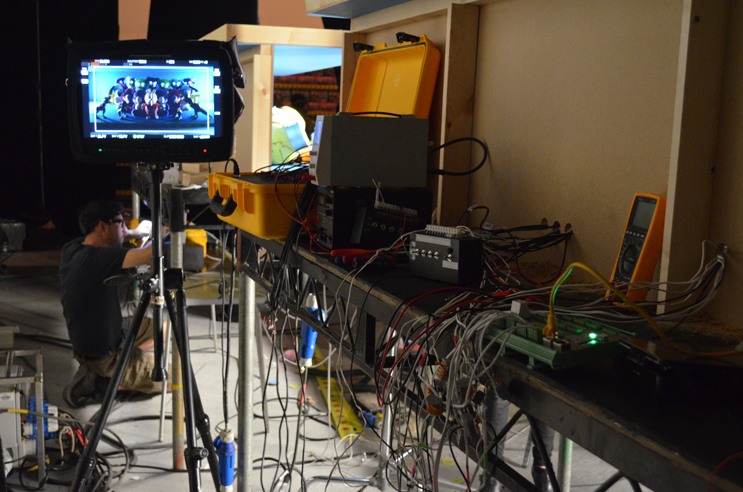
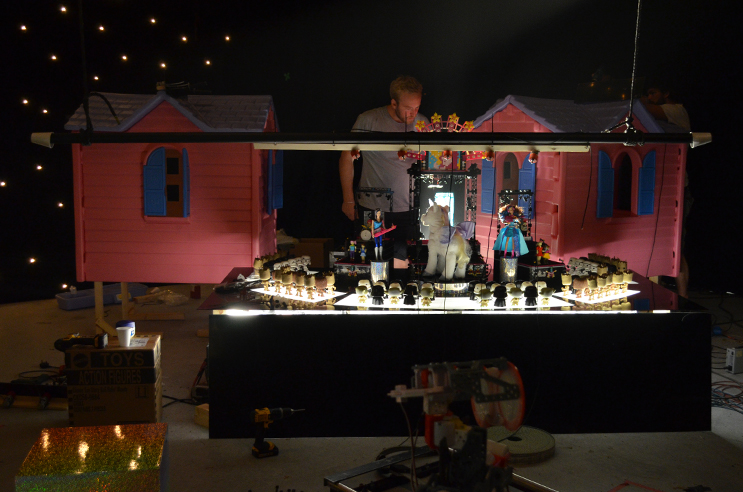
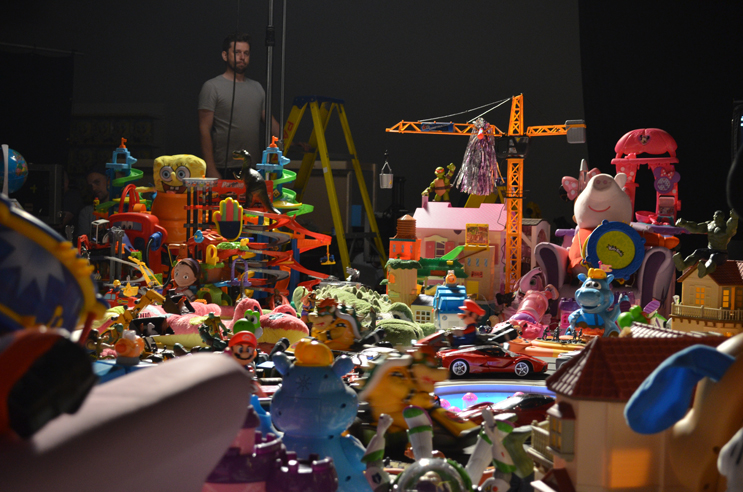
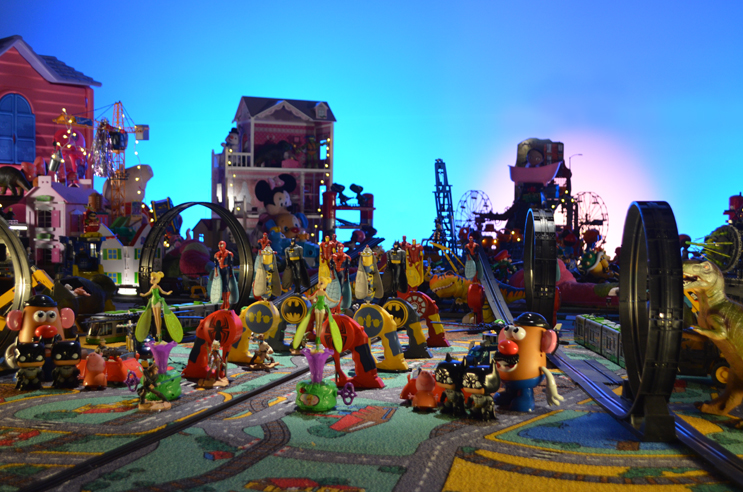
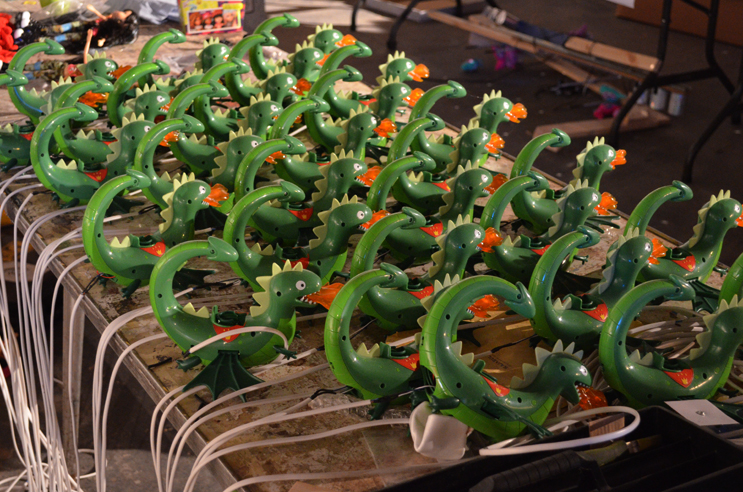
Mermaids and jellies in their magic pond
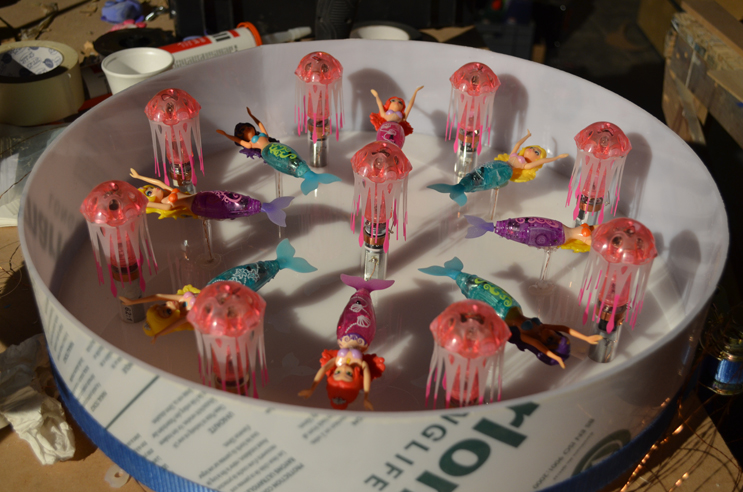
The Abominable Dr. Phibes at his desk
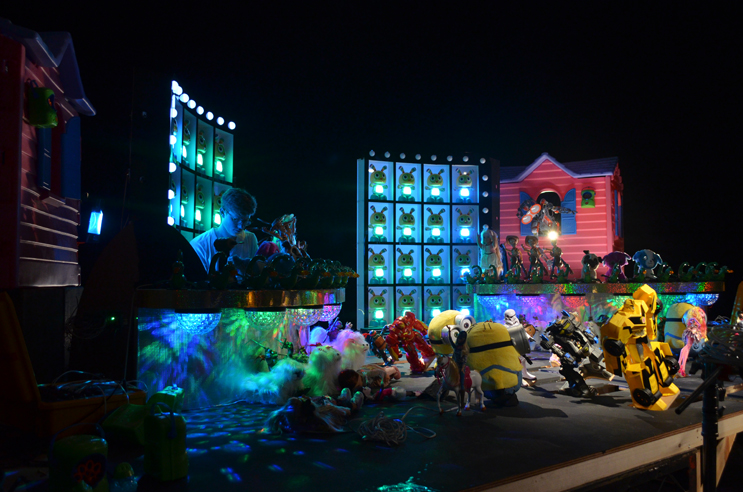
Lovely shell backdrop
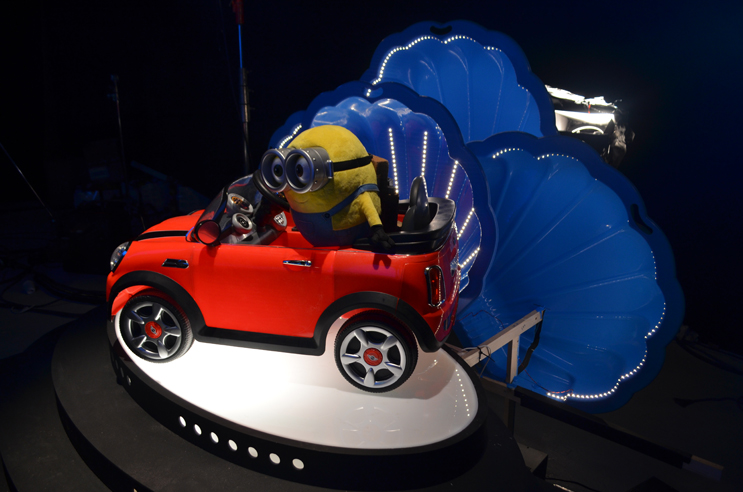
A call for additional assistance
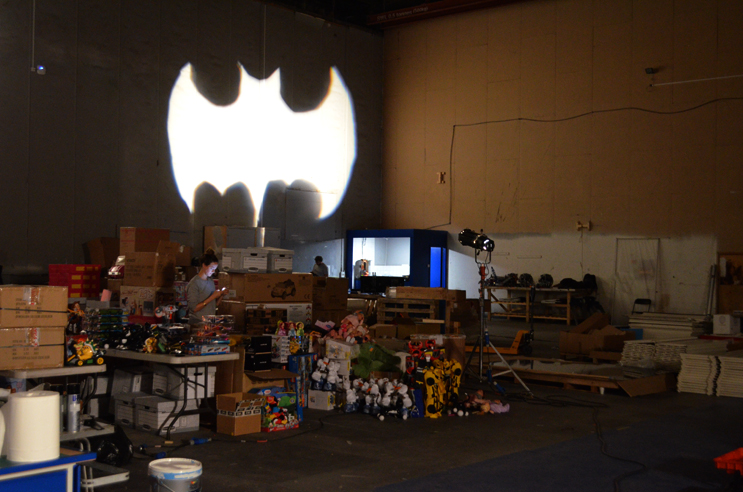
Everyone's favourite portable motion control specialist!

Thanks to Chris, Maz, Will, Dan, Jamie, Nu, Emily, Tim, Joe, Justin, Zee and loads of other cool people.